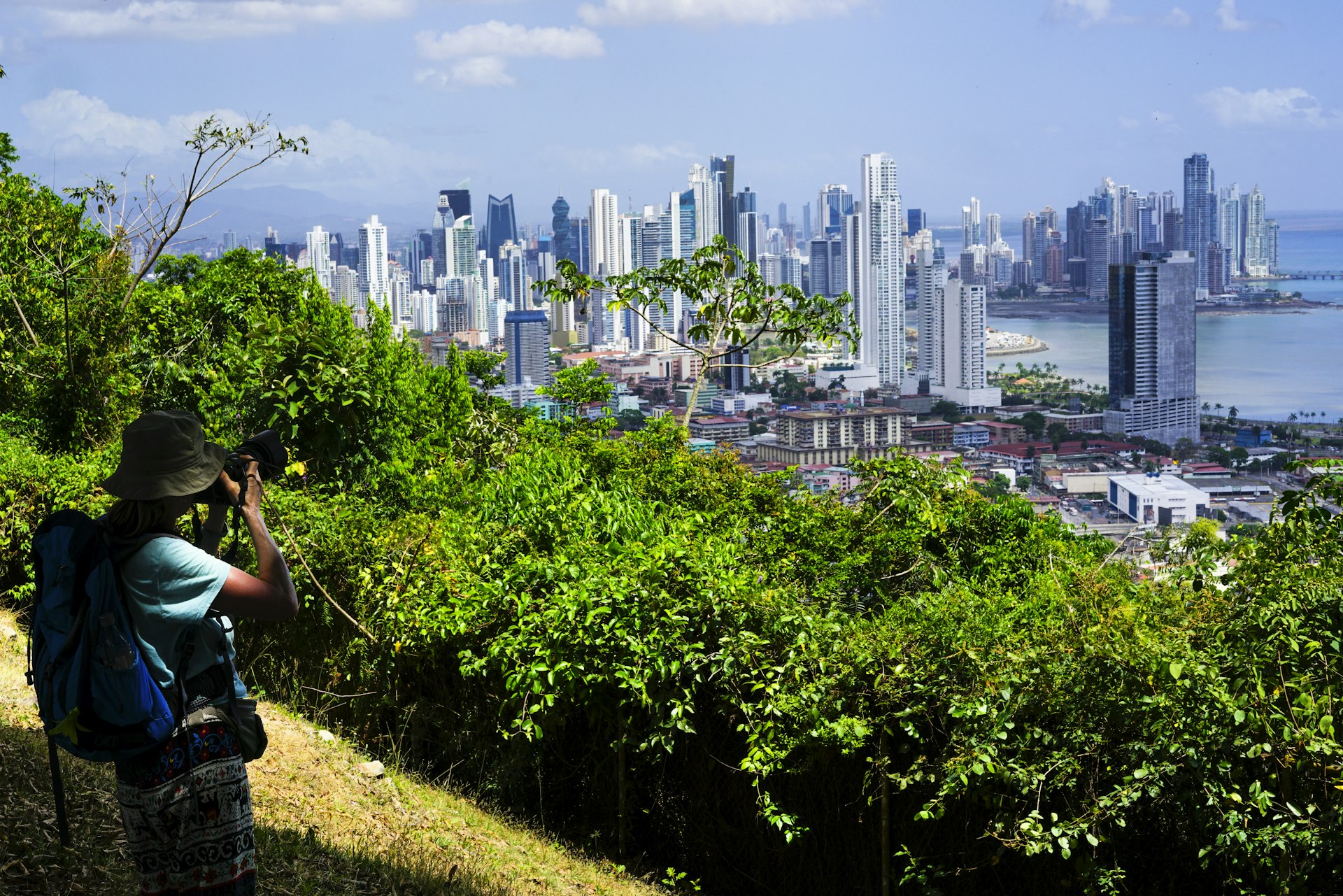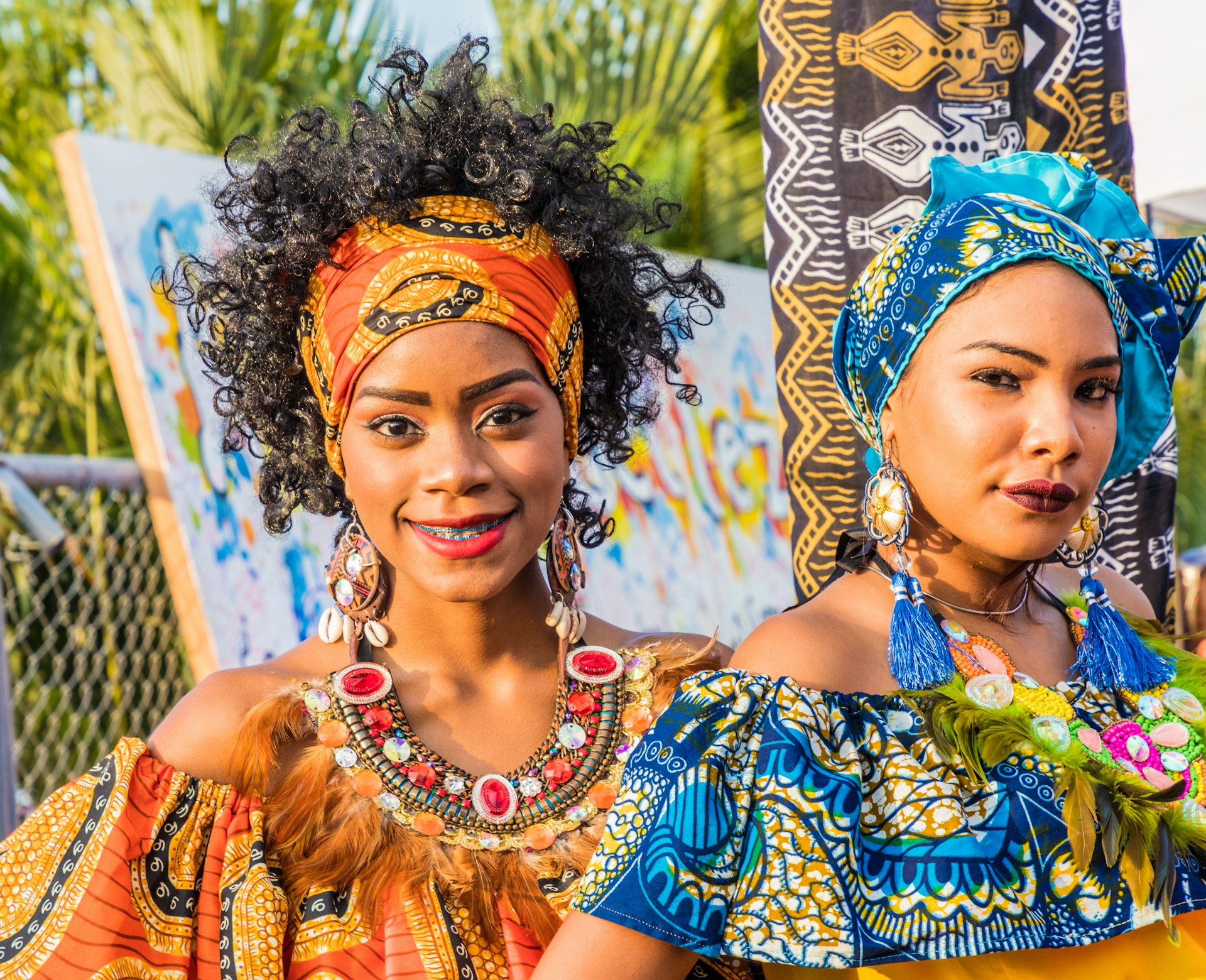Glossy showrooms, high-rise condos and luxury shopping malls illuminate Panama City’s banking district.
This has been the epicenter of prodigious real estate development in recent years. Panama City is an international banking center and global trans-shipment hub with generous offshore tax structures and strong secrecy laws. Dubious money, laundered through real estate, has been transforming the city’s oceanfront since the Noriega years. Despite this chequered past and present, it’s important to remember that as a tourist in Panama City, you’re highly unlikely to encounter cartel-related violence.
It’s safe to travel alone. The banking district is well policed, at least during the day, and most crimes are the low-key and opportunistic type you’ll encounter in any major city. Parts of the city are rough and tumble, others are no-go, but most are benign. You will have no problems if you stay alert and follow big city rules.
From planning your trip to local etiquette, here’s what you need to know before traveling to Panama City.
1. Study a map before choosing where to stay
Every neighborhood has its advantages and disadvantages. With cobblestone streets and Spanish colonial architecture, the historic quarter of Casco Antiguo is the most memorable and romantic part of the city. It has a plethora of high-end restaurants, luxury lofts and swanky rooftop bars, but a dearth of budget-friendly eateries and its public transport links aren’t the best.
The Calidonia district in the southern part of the city occupies a grid of streets from Plaza 5 de Mayo to Calle 42 Este. Avenida Central bustles with market stalls, and the roads to the south are dotted with budget-friendly hotels. The district is near plenty of Metro trains and buses. You can pick up cheap street food during the day when kitchens open for local hospital staff and civil servants. After dark, however, Calidonia becomes shady and downbeat with limited dining options.
To the east of Calidonia, the so-called banking district is a patchwork of several districts or corregimientos, including modern and emerging neighborhoods that host the lion’s share of high-end lodgings and Airbnb rentals. There are a few hostels and not nearly enough economical hotels. Many decent restaurants are dispersed throughout the banking district but are not always within walking distance.
If you’re in town to party, the Marbella and Bella Vista neighborhoods have great access to the bars and clubs on Calle Uruguay. El Cangrejo is an entertainment zone with a casino, good Metro train links on Vía España and a parade of restaurants on Vía Argentina.
2. Time your visit for budget-friendly deals and great weather
The high season coincides with the dry season, mid-December to early April, when prices are generally higher. The major festivals of Christmas, New Year, Carnival and Semana Santa see a price increase in the capital, but not as much as the beaches, where most city-dwellers spend the holidays.
Mid-April to early December is the cheapest time to visit Panama City, as long as you don’t mind getting soaked by the rain. Most deluges last only an hour or two in the afternoon, but the season gets wetter as it goes on. In the depths of it, the skies can be overcast for days, but the rains are usually intermittent, and the cloud cover can bring relief from the relentless Panamanian sun.
3. You’re better off with a Metro card than a car
Although a car is good for day trips out of town, don’t plan on driving much in the city. The one-way road system is baffling, city thoroughfares are often congested, and diversions are par for the course.
Instead, use Panama City’s public transport system, which includes a fleet of air-conditioned buses and Central America’s first-ever Metro train. Buy a three-in-one “Rapi-pass” upon arrival and gain access to Metro trains and buses and the departure gates at Albrook bus station.
4. Always keep a stash of low-denomination bills
You’ll need to show your ID and sign a register if you pay for anything with a higher bill than USD$20. Counterfeit money is an issue in the country, so all $50 and $100 bills will be scrutinized in Panama.
5. Don’t smoke in public
Legislation introduced in 2008 banned smoking in public places. People who smoke in non-designated areas are subject to fines of $25–100.

6. Dress for comfort but look sharp
Panamanians like to dress up and look their best. The ostentatious displays of fashion on display in Obarrio include stiletto heels that somehow survive the assault course of the city’s pavements. When socializing, casual attire is fine, but avoid wearing shorts and sandals to nice restaurants or social functions.
7. Tip hotel cleaning staff
If you stay in a hotel, leave a tip for the person who cleans your room – USD$2–3 a day is fine. A 10% tip is often added in good restaurants, but not always – check the bill before paying. In low-key local eateries, you may leave some loose change for the server. Unless they help with luggage, taxi drivers don’t expect a tip.
8. Don’t use drugs
Although Panama City is steeped in narco dollars, Panamanian society frowns on drug use, and the law does not tolerate it. If the police find you in possession of even small quantities of marijuana, you could spend several years in a Panamanian prison.
9. Don’t expect people to speak English
Panama City Spanish is Caribbean Spanish, extremely fast and heavily laden with jerga (slang). If Spanish is not your first language, you may struggle to catch it.
Don’t expect to find many English speakers during your day-to-day transactions. English is widely spoken in the business community, but not much outside of it, and mastering a few basic phrases of Spanish will help you get around.
10. It’s safe to drink tap water
The tap water in Panama City is perfectly safe to drink. Save on plastic waste by refilling water bottles at a faucet. If you prefer purified water, you can refill at the 20-liter garrafones in most hotel lobbies.

11. Prepare for environmental hazards
Panama City is an urban hothouse scratched out of the jungle. The elements are fierce – humidity is often 100%. You should take a day or two to relax and acclimate to the heat if you come from a cold-weather country.
Always apply sunscreen before going outside and keep an adequate water supply handy. Wear light clothes and a hat to keep the sun off your face. Bring a sturdy umbrella if you visit during the wet season.
Panama City suffers from flash floods during heavy downpours. If you get caught in a storm, you could end up wading through deep puddles. Traffic is generally heavy, and many parts of the city are not pedestrian-friendly. People living with asthma may find their symptoms are aggravated by fumes.
Sadly, the Bay of Panama is a dump for industrial effluence and untreated sewage, so the oceanfront malecón sometimes reeks.
12. Be aware of common scams
Scammers operate in all big cities, and some target tourists. Be wary of strangers who tell unfortunate and earnest stories that end with them asking for money. If it seems suspicious, it probably is. Watch out for fake tour guides who ask for payment in advance and then stand you up.
Old-school taxi scams that involve going around the houses to increase the fare can happen anywhere in the world, but in Panama City, it’s common for taxis to simply overcharge. There are no meters in the cabs. Fares are supposed to be based on zones, but in practice, they rarely are. If you look foreign, taxi drivers will bump up the fare. It’s best to negotiate and agree on the price beforehand.

13. Solo female travelers may receive unwanted attention
Panama City is typically safe for solo female travelers, but it’s best to avoid walking alone at night in Casco Antiguo, Santa Ana or Calidonia. Women may receive attention from chatty men on Metro trains or buses. If a man won’t leave you alone, ask a nearby older woman to assist.
14. Steer clear of sketchy neighborhoods
Thirty years ago, Casco Antiguo was dicey. Today, things have somewhat improved, but there are still pockets of the old neighborhood where you should exercise caution. If you’re staying in Casco Antiguo, the 20-minute walk from the nearest Metro train station, 5 de Mayo, is risky at night. Use a taxi or an Uber instead. To the west of Casco Antiguo, the neighboring El Chorrillo district is very dangerous and neglected. You should avoid this neighborhood entirely.
The district of Santa Ana, north of Casco Antiguo, is bisected by the pedestrianized peatonal, a lively shopping street that is safe to walk during the day; stay alert in the crowds. The side roads east of the peatonal are sketchy, and you shouldn’t wander around them. At its north end, the peatonal connects with Plaza 5 de Mayo, the National Assembly, a Metro station, a bus terminal and a grimy confluence of roads and flyovers. The area is lively into the evening, but stay alert and use a vehicle after 11pm.
North of 5 de Mayo, Avenida Central strikes into Calidonia district with street vendors and hustle. It’s fine to explore in the day, but don’t flaunt expensive equipment or jewelry. Calidonia is spooky and seedy after dark. Avoid run-down or poorly lit streets.
15. Keep your documents handy
Everyone is legally required to carry a photo ID at all times in public in Panama. Tourists should carry their passport or a photocopy of their passport with the photo page and immigration entry stamp.
16. LGBTIQ+ travelers are welcome
Attitudes in rural Panama are somewhat conservative but less so in Panama City. LGBTIQ+ travelers are unlikely to encounter prejudice, and discrimination based on sexual orientation and gender identity is prohibited by Panamanian law. There’s a lively gay scene in Casco Antiguo and El Cangrejo.
